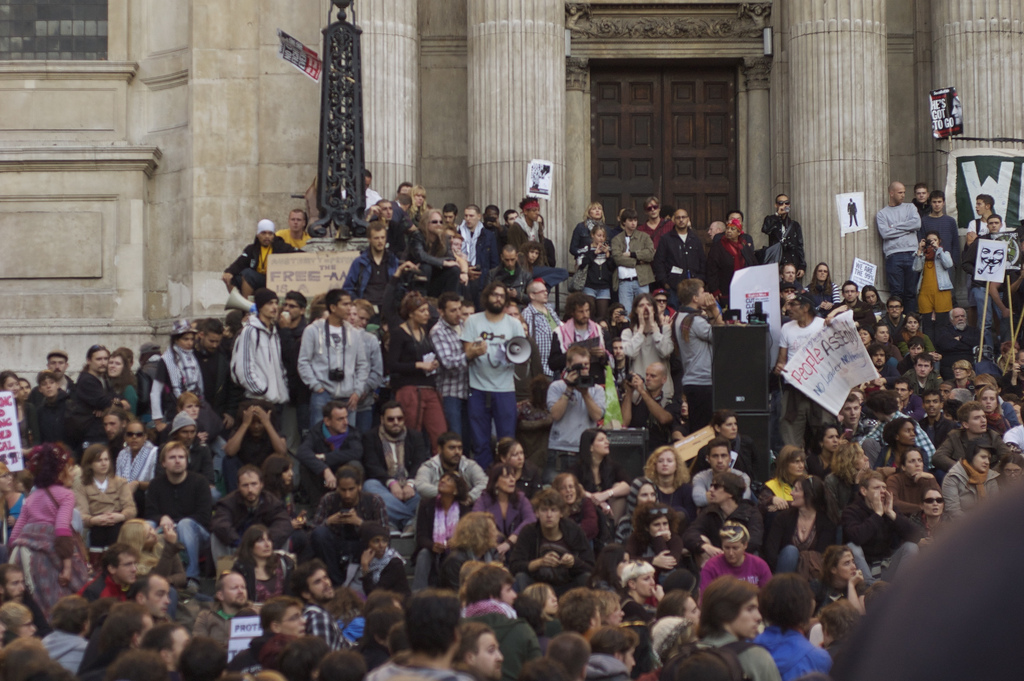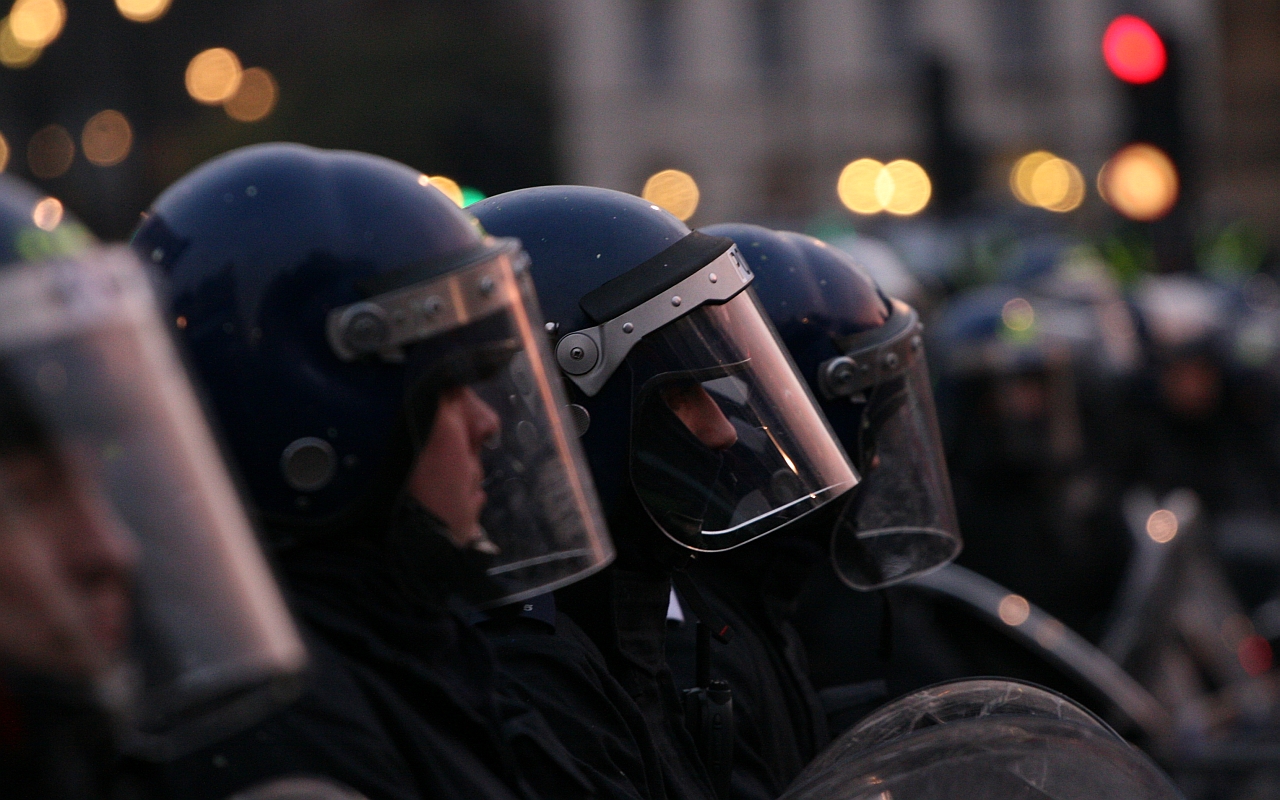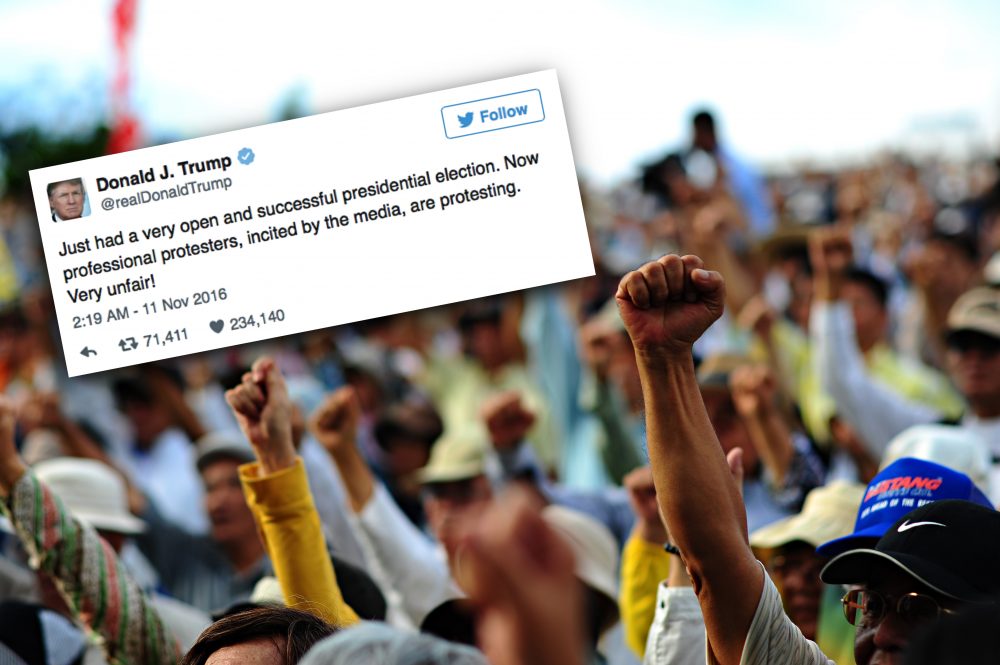Freedom of expression means that we can have our own opinions, and share them with others – whether in the classroom, on Twitter, or through art. This right is closely linked with the freedom of peaceful assembly, which means that we can gather with other people and express our views on things that affect us.
Sometimes we hear criticism of protest and demonstrations, for example:
Just had a very open and successful presidential election. Now professional protesters, incited by the media, are protesting. Very unfair!
— Donald J. Trump (@realDonaldTrump) November 11, 2016
Other times, protest is encouraged and celebrated:
Love the fact that the small groups of protesters last night have passion for our great country. We will all come together and be proud!
— Donald J. Trump (@realDonaldTrump) November 11, 2016
Confused? Don’t worry – this post explains why freedom of expression and freedom of assembly to peacefully protest and demonstrate are a necessary feature of democracy.
Let’s start with a quick video explainer
What is freedom of expression and why does it matter?
Article 10 of the European Convention on Human Rights, which is given effect in UK law through the Human Rights Act, protects our right to “hold opinions and to receive and impart information and ideas… regardless of frontiers.”
It is a “qualified right,” which means that it can be limited in some circumstances – for instance where it threatens public safety, health, or another person’s rights – such as their right not to be discriminated against (under Article 14 of the European Convention).
Freedom of expression is crucial in an educational context: it protects the rights of students, teachers and academics to discuss ideas, and even debate controversial subjects. It means that learning and discussion cannot be interfered with for political purposes.
This right also gives important protection to journalists, enabling them to get important information out to the public without being censored or intimidated by those in power.
The right to Tweet?

With the rapid development of technology, many people – not just journalists or academics – are expressing their views to a far wider audience than ever before, on a daily basis. Although human rights generally apply between individuals and the State, companies and other individuals can have a big impact on our ability to share our views via the Internet and social media platforms.
Creative Expression
Art can be just as powerful a tool for challenging the status quo as a Tweet or newspaper article. The Chinese government’s detention of subversive artist Ai Weiwei is an example of this. That is why Article 10 is not limited to speech, or writing; people often choose to express their views in more creative ways. The broad scope of the right to free expression means that States need to show a legitimate justification for censoring a painting or film.
The right to protest

Freedom of association and the right to peaceful assembly, protected by Article 11 of the European Convention of Human Rights, preserve our ability to gather with others and express our views collectively, for example by joining trade unions, or taking part in peaceful protests.
The freedom to protest is fundamental, as collective action by the public can lead to real changes in government policy. For example, following the “Refugees Welcome” March in London in September 2015, attended by tens of thousands of people, then UK Prime Minister David Cameron pledged to offer 20,000 vulnerable Syrian refugees asylum in the UK by 2020.
Like Article 10 (free expression), Article 11 (freedom of association) is a qualified right, and can be limited in certain circumstances – for example, to protect public order or to prevent crime.
Going too far – what happens when a State interferes too much with free speech and protest

In 2006, Ms Laporte exercised her rights to free expression and association by joining a coach of other people driving to the Royal Air Force in Fairford to protest against the UK government’s invasion of Iraq. The local police discovered that members of an anarchist group – surprisingly called ‘The Wombles’ – were on the coaches. They stopped the coaches, and held them for several hours, not even allowing passengers off at service stations to relieve themselves.
The coaches were ordered to turn around and return to London. Ms Laporte was unable to join the protest and peacefully express her outrage at the UK government’s actions.
The European Court of Human Rights found that the police had breached Ms Laporte’s rights to freedom of expression and assembly. They found that the breaches did not fall within the circumstances in which limitations of these rights are allowed by law. One of the most senior UK judges, Lord Bingham, had previously found that the police’s actions were “excessively premature and wholly disproportionate”.
Freedom of expression and freedom of peaceful assembly go hand in hand with living in a democratic society and – though it may be necessary in some circumstances – we should always be cautious about suppression of these freedoms.
For more information:
- Find out about 5 fearless fighters for free speech here.
- Read about the debate over Taylor Swift’s Instagram and freedom of expression here.
- See what human rights do for free speech and protest here.







